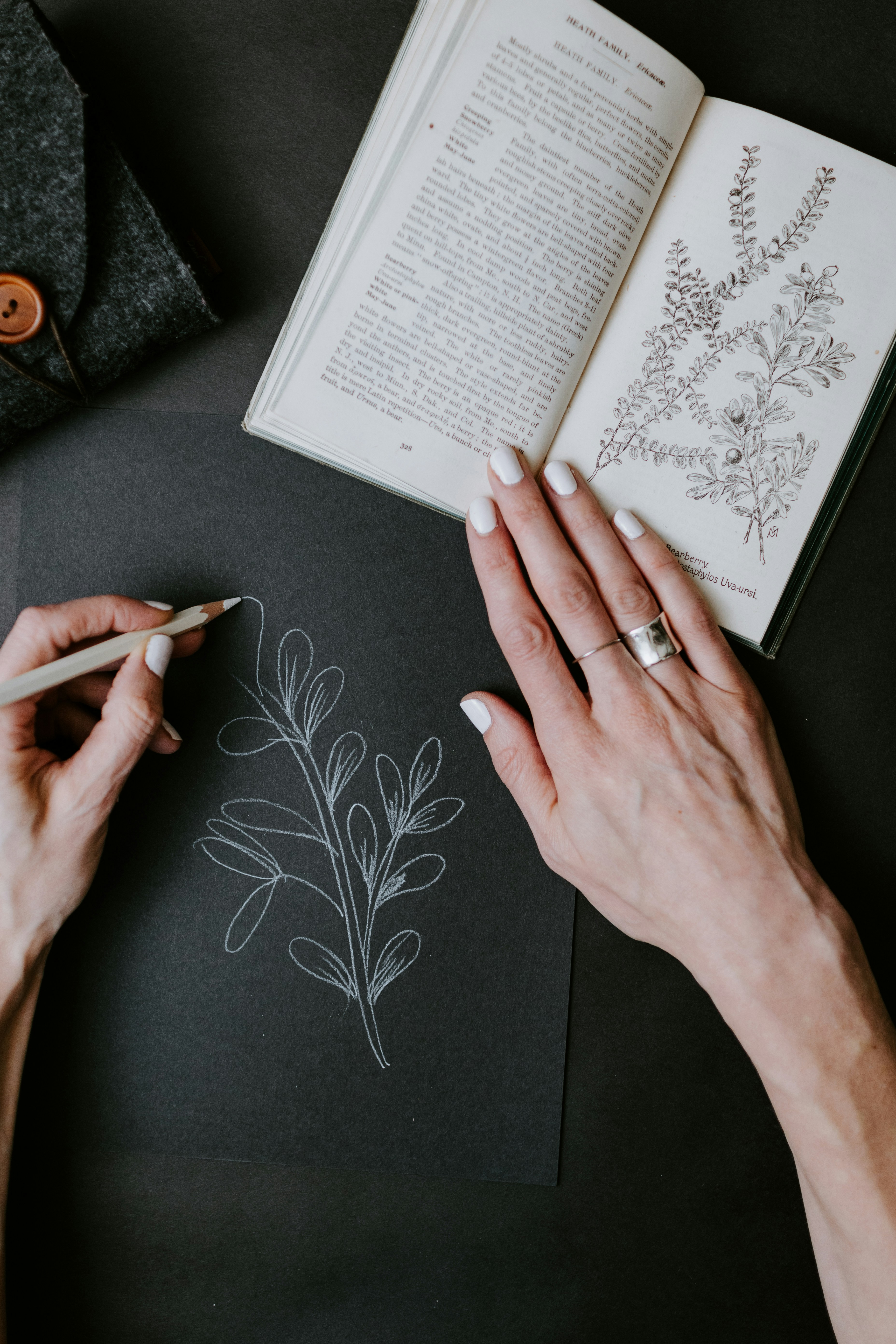Imagine being able to turn your passion for art into a thriving career, where you have the freedom to work from anywhere in the world and the potential to earn a living doing what you love. As a freelance digital artist, you have the opportunity to create stunning visual masterpieces using cutting-edge technology and your own unique artistic vision. With the demand for digital artwork on the rise, there has never been a better time to enter the exciting world of freelance digital art. Whether you specialize in illustrations, character designs, or concept art, the possibilities are endless, and the rewards are immeasurable. Join the ranks of talented and entrepreneurial individuals who have forged successful paths as freelance digital artists and claim your spot in this rapidly growing industry.
What is a Freelance Digital Artist
A freelance digital artist is a talented creative professional who uses digital tools and techniques to create visual art. Unlike traditional artists who work with physical materials, a freelance digital artist employs digital software and technology to produce their work. This can include various forms of digital art such as illustrations, graphic design, animation, and more. As a freelance digital artist, you have the freedom to work independently and take on projects based on your skills and interests.
Definition of Freelance Digital Artist
A freelance digital artist is an individual who offers their artistic services on a project basis, rather than being employed by a single company or client. They use digital tools and software to create visual content, either for personal expression or for commercial purposes. Freelance digital artists work remotely and have the flexibility to choose their projects and clients. They can work in various industries such as advertising, gaming, film and television, publishing, and more.
Skills and Qualifications of a Freelance Digital Artist
To succeed as a freelance digital artist, there are several skills and qualifications that are essential:
Artistic Skills: A strong foundation in traditional art skills such as drawing, coloring, and composition is crucial. Understanding principles of light, shadow, and perspective is important for creating visually appealing digital art.
Proficiency in Digital Software: Mastery of digital art software such as Adobe Photoshop, Illustrator, or Procreate is necessary. Being well-versed in the tools and features these programs offer will enable you to create high-quality digital art.
Creativity and Imagination: A freelance digital artist must have a vivid imagination and the ability to think outside the box. Being able to come up with unique and innovative ideas is what sets digital artists apart.
Attention to Detail: The ability to pay attention to small details is essential in digital art. Whether it’s creating intricate textures or fine-tuning color gradients, attention to detail can make a significant difference in the final artwork.
Communication Skills: Freelance digital artists need to effectively communicate with clients, understand their requirements, and provide updates on the progress of their work. Good communication skills will ensure client satisfaction and successful project completion.
Role and Responsibilities of a Freelance Digital Artist
As a freelance digital artist, your role and responsibilities may include:
Creating Visual Content: Your main responsibility is to create digital art based on the client’s brief or your own creative vision. This can involve creating illustrations, digital paintings, logos, animations, and more.
Collaborating with Clients: Freelance digital artists often work closely with clients to understand their needs and incorporate their feedback into the artwork. Collaboration and effective communication are key to delivering a final product that meets the client’s expectations.
Meeting Deadlines: Time management is crucial for freelancers, so meeting deadlines is essential. This involves planning your workload effectively, setting realistic timelines, and ensuring timely delivery of the final artwork.
Self-promotion and Marketing: Freelance digital artists are responsible for promoting their own work and finding new clients. This may involve building an online portfolio, utilizing social media platforms, attending professional events, and networking with potential clients.
Continuous Learning: Keeping up-to-date with the latest trends, techniques, and software in digital art is important for a freelance digital artist. Continuous learning, whether through online tutorials or attending workshops, helps to stay competitive in the industry.
Getting Started as a Freelance Digital Artist
Now that you understand the basics of what a freelance digital artist does, let’s delve into how you can get started in this exciting field.
Building a Strong Portfolio
A portfolio is a collection of your best artwork that showcases your skills and style. It is essential for attracting potential clients and securing freelance opportunities. When building your portfolio, consider including a variety of artwork that demonstrates your versatility and range. It’s important to curate your portfolio to showcase your best work and highlight your strongest skills. Include a diverse selection of projects and styles to showcase your versatility as a freelance digital artist.
Choosing the Right Niche
Specializing in a specific niche can help you stand out from the competition and attract clients who are specifically looking for your expertise. Consider your interests and skills to determine which niche aligns best with your abilities and passions. Whether it’s character design, concept art, children’s book illustrations, or architectural visualizations, focusing on a niche can help you become an expert in that area and build a strong reputation.
Creating a Professional Website and Online Presence
Having a professional website is essential for showcasing your work and establishing your online presence as a freelance digital artist. Ensure that your website is well-designed, easy to navigate, and displays your artwork effectively. It’s also important to optimize your website for search engines so that potential clients can easily find you. Additionally, consider creating profiles on popular portfolio platforms and social media sites to expand your online presence and attract a wider audience.
Finding Freelancing Opportunities
Once you have set up your portfolio and established your online presence, it’s time to start finding freelancing opportunities.
Freelancing Platforms and Websites
Freelancing platforms and websites are a popular way to find freelance digital art opportunities. Websites such as Upwork, Freelancer, and Fiverr allow you to create a profile, showcase your portfolio, and bid on projects posted by clients. These platforms provide a platform for connecting with clients from around the world and offer a wide range of project opportunities.
Networking and Building Connections
Networking is crucial to finding freelance opportunities and expanding your client base. Attend industry events, conferences, and meetups to connect with other professionals in your field. Building relationships with fellow digital artists, potential clients, and industry influencers can lead to valuable connections and future collaboration opportunities. Additionally, use social media platforms to engage with your audience, join relevant online communities, and participate in discussions to expand your network.
Collaborating with Other Professionals
Collaborating with other professionals, such as writers, animators, or game developers, can broaden your skillset and open new doors in the freelance digital art industry. By working on collaborative projects, you can gain experience in different aspects of digital art and expand your portfolio. Collaborations also allow you to learn from and share knowledge with other talented individuals, creating a mutually beneficial environment.
Understanding Pricing and Contracts
Determining your rates and managing contracts are important aspects of being a freelance digital artist. It’s essential to establish fair pricing for your services and ensure that contracts are clear and protect your interests.
Determining Your Rates as a Freelance Digital Artist
Setting your rates can be challenging, especially when starting out as a freelance digital artist. Consider factors such as your skill level, experience, and the complexity of the project when determining your rates. Research industry standards and analyze the rates of other freelance digital artists to ensure that you are charging competitively. As you gain experience and your portfolio grows, you can gradually increase your rates.
Negotiating and Managing Contracts
Contracts are essential for protecting your rights and ensuring a clear understanding between you and your clients. Clearly outline the scope of work, deadlines, payment terms, revisions policy, and any other important details in your contracts. Be prepared to negotiate terms with clients and make sure both parties are satisfied with the agreement before starting any project. It’s also crucial to keep a record of all contracts and communication for future reference.
Dealing with Payment Issues
Payment issues can be a common challenge for freelance digital artists. To avoid payment conflicts, establish clear payment terms and discuss them with your clients before starting a project. Set up a system for invoicing and consider using platforms or tools that facilitate secure payment transactions. Regularly follow up with clients regarding pending payments and address any payment-related concerns promptly. It’s important to be professional, yet firm, when dealing with payment issues to ensure fair compensation for your work.

Managing Time and Workload
As a freelance digital artist, managing your time and workload efficiently is crucial for meeting deadlines and maintaining a healthy work-life balance.
Setting Realistic Deadlines
When taking on projects, it’s important to set realistic deadlines that consider the complexity of the artwork and your available time. Avoid overcommitting and evaluate your workload before agreeing to new projects. Setting realistic deadlines will help you maintain a good reputation, avoid unnecessary stress, and deliver high-quality work.
Balancing Multiple Projects
Juggling multiple projects can be challenging but is a common aspect of freelancing. Prioritize your projects based on deadlines and allocate dedicated time for each one. Use project management tools or apps to stay organized and ensure you’re on track with each project. Effective communication with clients is key, as they should be aware of your availability and any potential schedule conflicts.
Effective Time Management Strategies
Implementing effective time management strategies is crucial for freelancers. Break down your projects into smaller tasks and set specific timeframes for completing each task. Avoid multitasking and focus on one project at a time to ensure higher productivity. Utilize time-tracking tools to monitor your work hours and identify areas where you can improve efficiency. Remember to schedule breaks and rest periods to avoid burnout and maintain a healthy work-life balance.
Developing Client Relationships
Building and maintaining strong client relationships is essential for a successful freelance digital artist. Happy and satisfied clients can provide valuable referrals and can become repeat clients in the future.
Maintaining Professional Communication
Clear and professional communication is key to maintaining good client relationships. Respond to client inquiries and messages promptly, providing regular updates on the progress of their project. Be attentive to their feedback and requests, and address any concerns they may have. Keep the lines of communication open throughout the project to ensure that both parties are on the same page.
Understanding and Meeting Client Expectations
Understanding and meeting client expectations is crucial for client satisfaction. Take the time to thoroughly understand the client’s vision and requirements before starting a project. Ask questions to clarify any uncertainties and provide regular progress updates to ensure that the client’s expectations are being met. Address any concerns or issues promptly and make necessary revisions to ensure client satisfaction.
Building Long-lasting Client Relationships
Building long-lasting client relationships can lead to ongoing freelance opportunities and referrals. Offer exceptional customer service, go above and beyond expectations, and deliver high-quality work consistently. Stay in touch with clients even after a project is completed, showing genuine interest in their future projects or initiatives. Keep your clients updated on new artwork and industry trends, and maintain a professional and friendly demeanor in all communication. Building trust and rapport with clients is essential for establishing long-term relationships.
Continuous Skill Development
As a freelance digital artist, continuous learning and skill development are vital to staying current and growing in the industry.
Staying Updated with Industry Trends and Techniques
The field of digital art is constantly evolving, with new techniques and trends emerging regularly. Stay up-to-date with industry news, follow influential artists, and engage with online art communities to gain exposure to new ideas and techniques. Dedicate time to learning new software features, experimenting with different styles, and exploring innovative digital art concepts. Continuous learning will not only enhance your skillset but also keep your work fresh and appealing to clients.
Exploring New Software and Tools
Digital art software and tools are constantly improving and expanding. Stay informed about the latest software updates and explore new tools that can enhance your workflow and improve the quality of your work. Experiment with different brush sets, plugins, and filters to discover new ways to express your creativity. Exploring new software and tools will allow you to stay ahead of the competition and offer unique and cutting-edge services to clients.
Taking up Relevant Training or Courses
Formal training or courses can provide valuable insights and enhance your skills as a freelance digital artist. Look for online courses, workshops, or tutorials that focus on topics relevant to your niche or areas of interest. These courses can provide you with new techniques, broaden your understanding of digital art principles, and expose you to different artistic perspectives. Continuous learning through relevant training can help you refine your skills, improve your portfolio, and offer more specialized services to clients.
Dealing with Challenges
Being a freelance digital artist comes with its fair share of challenges. Here are some common challenges and ways to overcome them.
Managing Creative Block
Creative block is a common challenge experienced by artists of all disciplines. When faced with a creative block, take a break and step away from your work for a while. Engage in activities that inspire you or explore other forms of art to reignite your creativity. Seek inspiration from nature, art exhibitions, or by browsing online galleries. Often, a change of scenery or working on personal projects can help overcome creative block and restore your artistic flow.
Handling Difficult Clients
Encountering difficult clients is a possibility in any freelance profession. When dealing with difficult clients, remain calm and professional. Listen attentively to their concerns and try to find common ground. Seek constructive feedback, and if necessary, propose revisions or solutions that address their concerns. If a situation becomes excessively challenging or toxic, it may be necessary to reassess the client relationship and consider ending the collaboration. Prioritize your mental well-being and the quality of your work.
Overcoming Self-doubt and Imposter Syndrome
Self-doubt and imposter syndrome can affect even the most talented individuals. Recognize that these feelings are common and remind yourself of your accomplishments and abilities. Celebrate your successes and focus on your unique artistic style and strengths. Surround yourself with a supportive community of fellow artists or join online groups where you can share your experiences and receive encouragement. Remember that growth comes from pushing past self-doubt and continually challenging yourself.
Marketing and Self-promotion
Marketing and self-promotion are essential for attracting new clients and expanding your reach as a freelance digital artist.
Utilizing Social Media for Branding and Exposure
Social media platforms provide powerful marketing tools for freelance digital artists. Create accounts on platforms such as Instagram, Facebook, Twitter, or Behance to showcase your work and engage with your audience. Regularly update your social media profiles with your latest artwork, behind-the-scenes content, and industry insights. Use relevant hashtags and engage with other artists and potential clients to boost your visibility and expand your network.
Networking at Events and Conferences
Attending industry events and conferences offers valuable networking opportunities. Participate in panels, workshops, or artist alleys to showcase your work and connect with like-minded individuals. Bring business cards or other promotional materials to leave a lasting impression. Do not underestimate the power of face-to-face interactions, as they can result in valuable connections with potential clients or collaborators.
Showcasing Work in Online Communities and Forums
Online communities and forums dedicated to digital art are great platforms for showcasing your work and receiving feedback from fellow artists. Join communities such as DeviantArt, ArtStation, or Reddit’s digital art subreddits to share your artwork, offer constructive criticism to others, and interact with a broader audience. Actively engaging in these communities not only allows you to receive exposure but also opens the door to potential freelance opportunities.
Balancing Freelance Work and Personal Life
Maintaining a healthy work-life balance is essential to avoid burnout and ensure overall well-being.
Setting Boundaries and Priorities
Setting clear boundaries between work and personal life is crucial as a freelance digital artist. Determine your working hours and communicate them clearly to clients to manage their expectations. Create a dedicated workspace that separates your professional life from your personal life. Prioritize your mental and physical health, hobbies, and personal relationships by incorporating regular breaks and days off into your schedule. It’s important to recharge and refresh, allowing yourself to return to work with renewed energy and creativity.
Avoiding Burnout
Freelancers are prone to burnout due to the demanding and unpredictable nature of their work. To avoid burnout, practice self-care techniques such as getting regular exercise, maintaining a healthy diet, and getting enough sleep. Take breaks and engage in activities that help to relax and recharge. It’s important to know when to step away from work and focus on your well-being. Remember, you cannot deliver your best work if you are physically and mentally exhausted.
Maintaining a Healthy Work-Life Balance
Balancing your freelance work and personal life requires conscious effort. Create a schedule that includes dedicated time for work, personal activities, and relaxation. Be realistic about your workload and avoid overcommitting to projects. Learn to say no when necessary and set aside quality time for personal relationships and hobbies. By consciously maintaining a healthy work-life balance, you can avoid burnout and sustain both your personal and professional happiness.
By following these guidelines and investing in your skills, relationships, and personal well-being, you can thrive as a successful freelance digital artist. Remember to continuously learn, adapt to industry trends, and stay passionate about your craft. With dedication and perseverance, you can build a fulfilling and prosperous career as a freelance digital artist.



